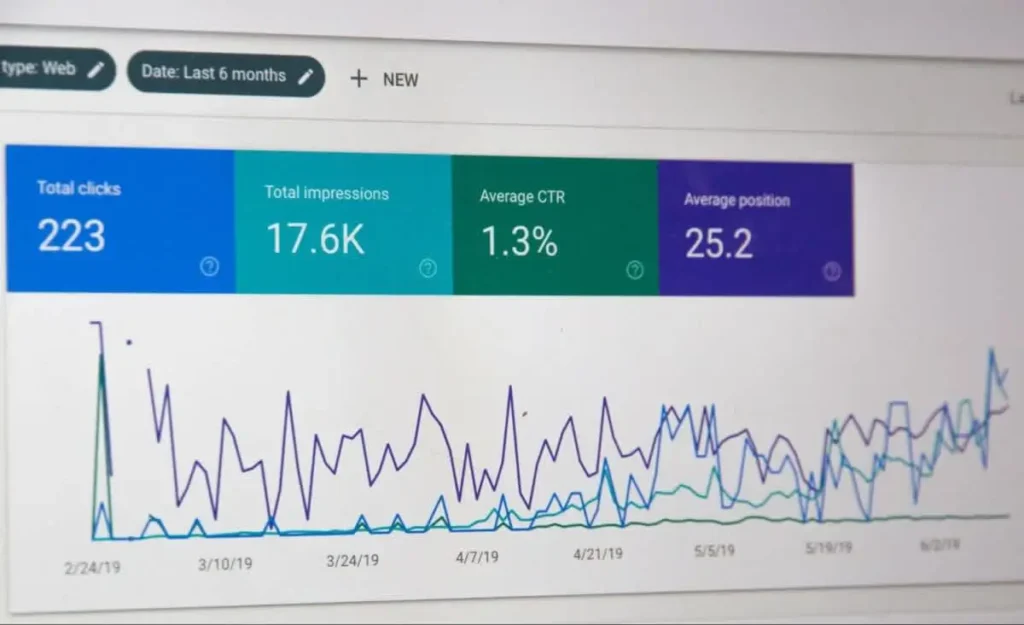Suppose you are throwing a birthday party and sending invitations to people. Search results work the same way. Your posted content is an invitation, and your website is the party you wish more people would attend.
Click-Through Rate (CTR) is the rate of clicks on a particular search result. The ranking of a site depends upon the number of clicks it receives after being displayed on the result page. The more clicks it gets, the higher it is going to rank. Similarly, the more your party invitation is accepted, the more people are going to join it.
Now let’s explore in this article how schema impacts the CTR and overall searchability of a webpage. Organic search results are typically displayed based on their relevance to user intent. Just like the baker knows what is the best frosting for birthday cake, search engines scan millions of pages and list what is most relevant on serp.
Here schema markup can be considered as the additional decoration to your party invitation giving information about location of the party, food items, timings etc. This will make more people like and accept your invitation and ultimately make your birthday party, a grand birthday party.
Schema markup helps a webpage to rank higher on search engines and increase organic search ranking of the page. Now let’s delve deeper into understanding the impact of schema markup on CTR and overall organic ranking
WHAT IS SCHEMA MARKUP
Just like your birthday invitation card gives information about your party, its location, food items, and other related information, schema markup is structured data that tells the search engine about your website’s context, relevance, what it is about, and why it should be displayed in search results.
As discussed above, organic search results are typically displayed based on their relevance to the user’s query. The more effective the schema is, the greater the chances that your webpage will be listed first on the result page. Internet users will click the first suggested web results and consider them the most relevant. This will ultimately boost the webpage’s visibility and drive more traffic.
HOW Schema Markup Increases Organic Search Results by Influencing CTR
As we have understood until now, schema markup is structured data of a particular web displayed on the results page. We have also discussed that the better the schema, the more it grabs the user’s attention.
However, there are different factors of schema markup strategy that are worth mentioning when discussing the overall impact of schema markup on CTR. these are
Rich Snippets
Rich snippets, or rich results, are the structured data of a particular webpage that pops up on the result page. In simpler terms, schema markup can be described as underlying code containing additional information, and a rich snippet is the displayed result on SERP.
In other words, schema markup is the technical aspect, while rich snippets are the visible outcome of its implementation. It is characterized by the ratings and review bar of the webpage on the result page.
Schema markup is a semantic vocabulary that assists Google by providing additional information about the page content. The structured data provided by schema markup enhances voice search optimization and increases searchability.
The main aim of schema markup is to get rich snippets in search results, which is additional information beyond the meta description and title.
Schema Markup Assists Search Engines to Understand web page content.
Humans can easily deduce content available online. In contrast, search engine tech has to be taught the content via machine language. Here comes schema markup, which provides search engines with semantic vocabulary to understand the content and relevance of particular web pages.
Google, Yandex, and Bing create the semantic vocabulary under Schema.org. It helps search engines understand the relevance of content regarding user intent. Schema.org has allowed visually appealing search results. For this very reason, different schema types are implemented to rank web pages higher in search results.
Schema with Google Tag Manager (GTM) allows SEO experts and web developers to deploy schema markup on sites through Custom HTML tags. Further, a schema markup generator, a JSON-LD generator, and Amplitude Analytics are some of the best schema markup generators and alternatives to GTM.
Moreover, schema updates provide refreshed information about the site, keeping it always on the SERP. Upstream schema markup has a positive impact on your website’s overall SEO, and it also enables rich snippets and better ranking.
Schema Markup Allows Featured Snippets
Featured snippets are the specific answer to the user’s query appearing at the top of the result page. They are standalone, precise, and relevant answers to user questions along with the link to the source.
Feature snippets increase visibility. Generally, while searching, you would prefer the site that appears at the top with precise answers for your query. You, as a user, would find it most relevant and authentic, and you would click the site link. That is how feature snippets help sites rank higher organically.
What Schema You Can Add to Increase CTR
Various schema types are used for different types of content. They enhance the visibility and searchability of websites.
Event Schema:
It is implemented to mark specific events, such as conferences, meetings, or concerts. Event schema markups include the date, location, and time of the event, along with the contact information of the organizer.
Review schema:
Review schema markup allows for ratings and reviews for particular businesses, services or products.
Organization schema:
Organization Schema provides information about an organization or company, its logo, operating hours, contact information, etc
Local Business Schema:
Usually, service-based businesses operating in a particular geography implement schema for their services.
Person schema:
Person Schema is usually used to provide details about authors, entrepreneurs and public figures. These schema markups include biography, image and social media platforms.
Ecommerce Schema:
Schema markup for e-commerce or product schema is designed for online brands and e-commerce stores to provide information about their products. It includes product descriptions, prices, SKU numbers, and reviews with product pictures.
Schema markup plays an influential role in search engine ranking. By deploying schema markup, you assist search engines and attract users through orderly, arranged visually appealing information. Hence, with growing digital competition, schema markup’s power in SEO will become more significant over time.
FAQ
- What is CTR in SEO?
Click-through rate (CTR) is the number of clicks your web page or content receives. If your webpage has a CTR of more than 3%, meaning that every three people out of 100 click on it, it is considered suitable for SEO.
- What is schema markup optimization?
Schema Markup Optimization is the implementation of schema markup to assist search engines in inferring the content of the webpage. It is marked by using relevant, accurate, and effective information about the site. This increases the CTR and boosts the website’s visibility.
- What is the recommended format for implementing schema markup?
Google recommends JSON-LD as the format for implementing schema markup because it is far easier than other formats.
- How do you check the schema implementation of a competitor?
The schema markup validator and schema.org validator analyze competitors’ schema implementations. These tools allow you to check schema markup using a website’s URL.


